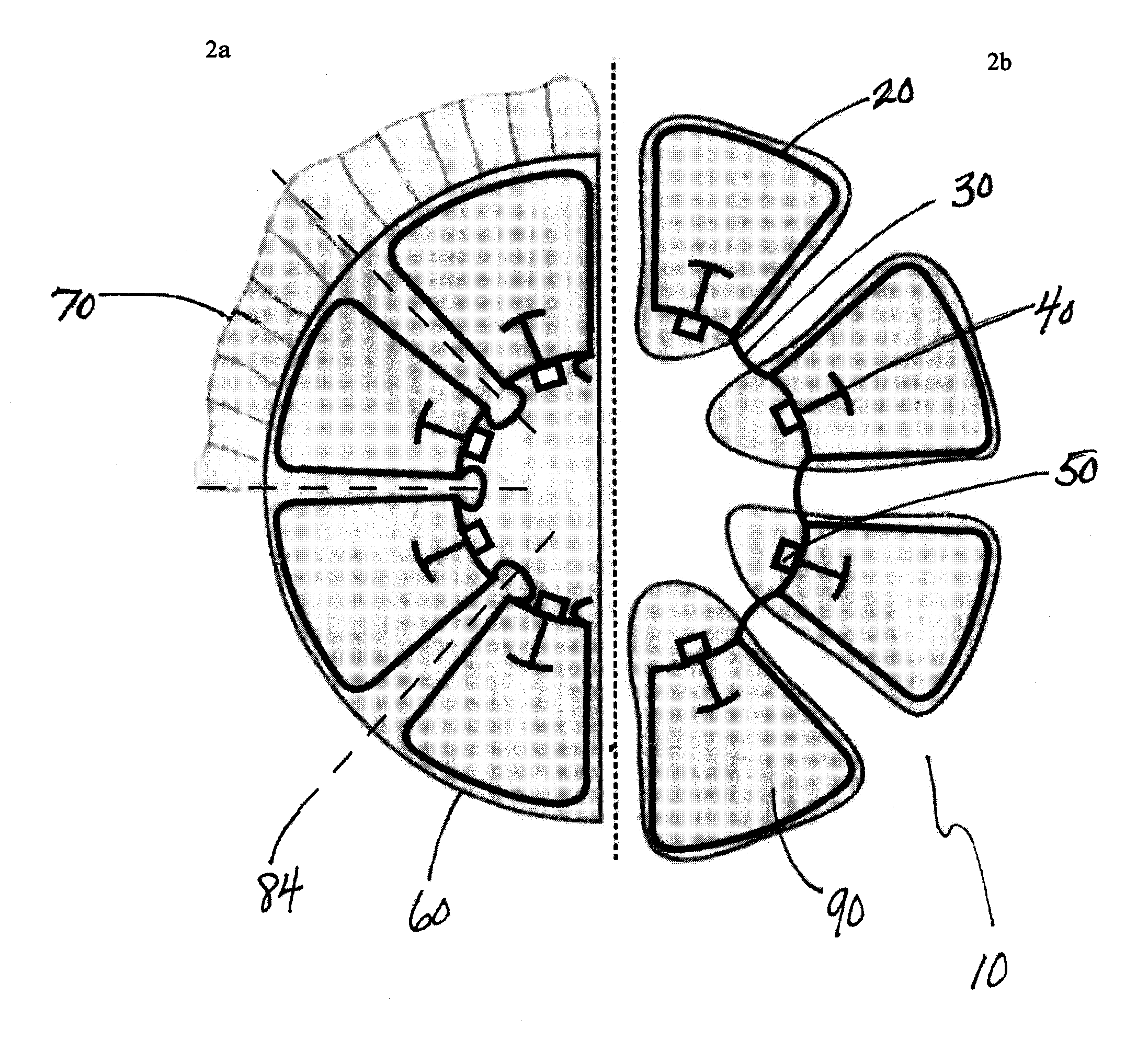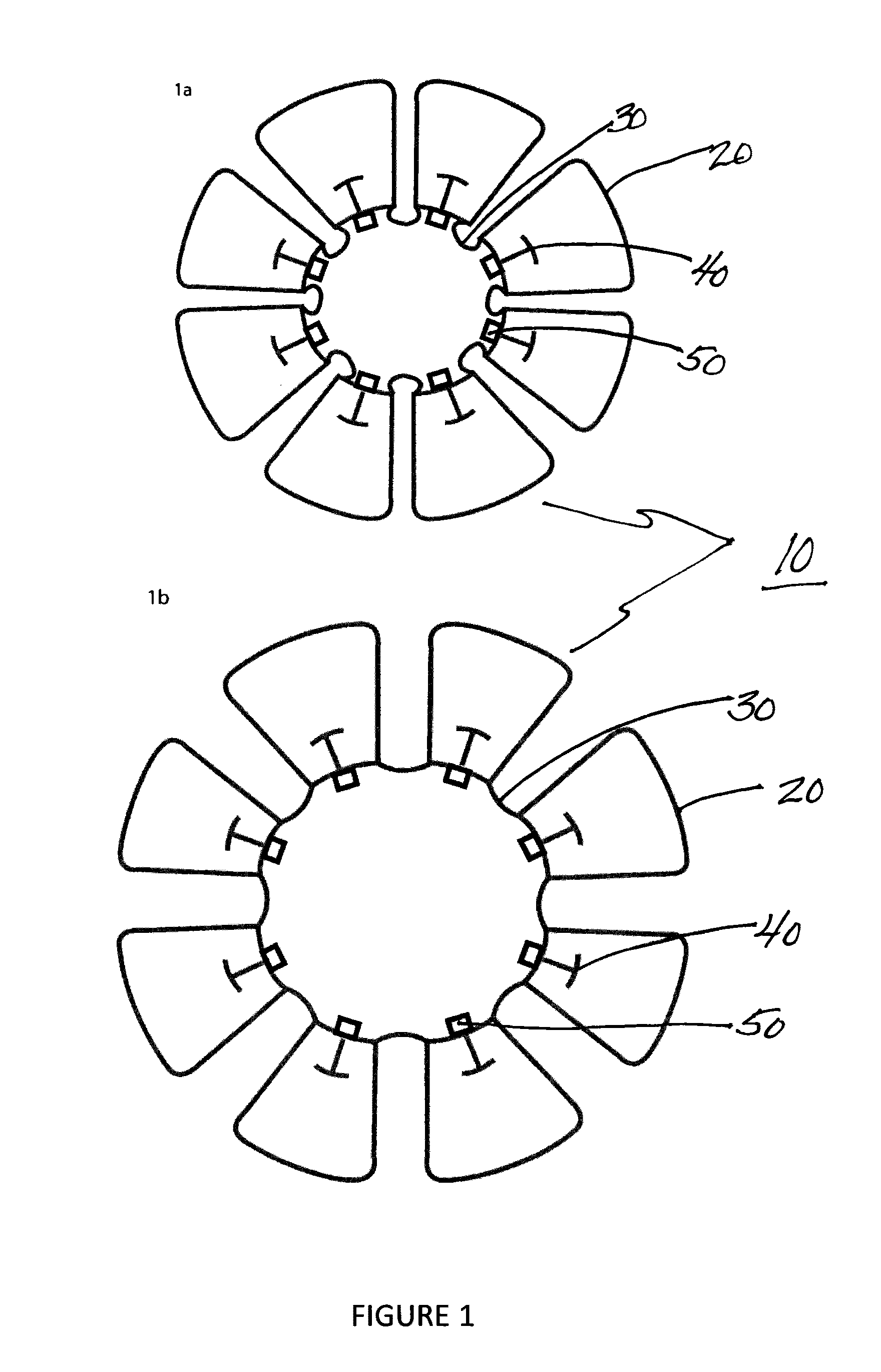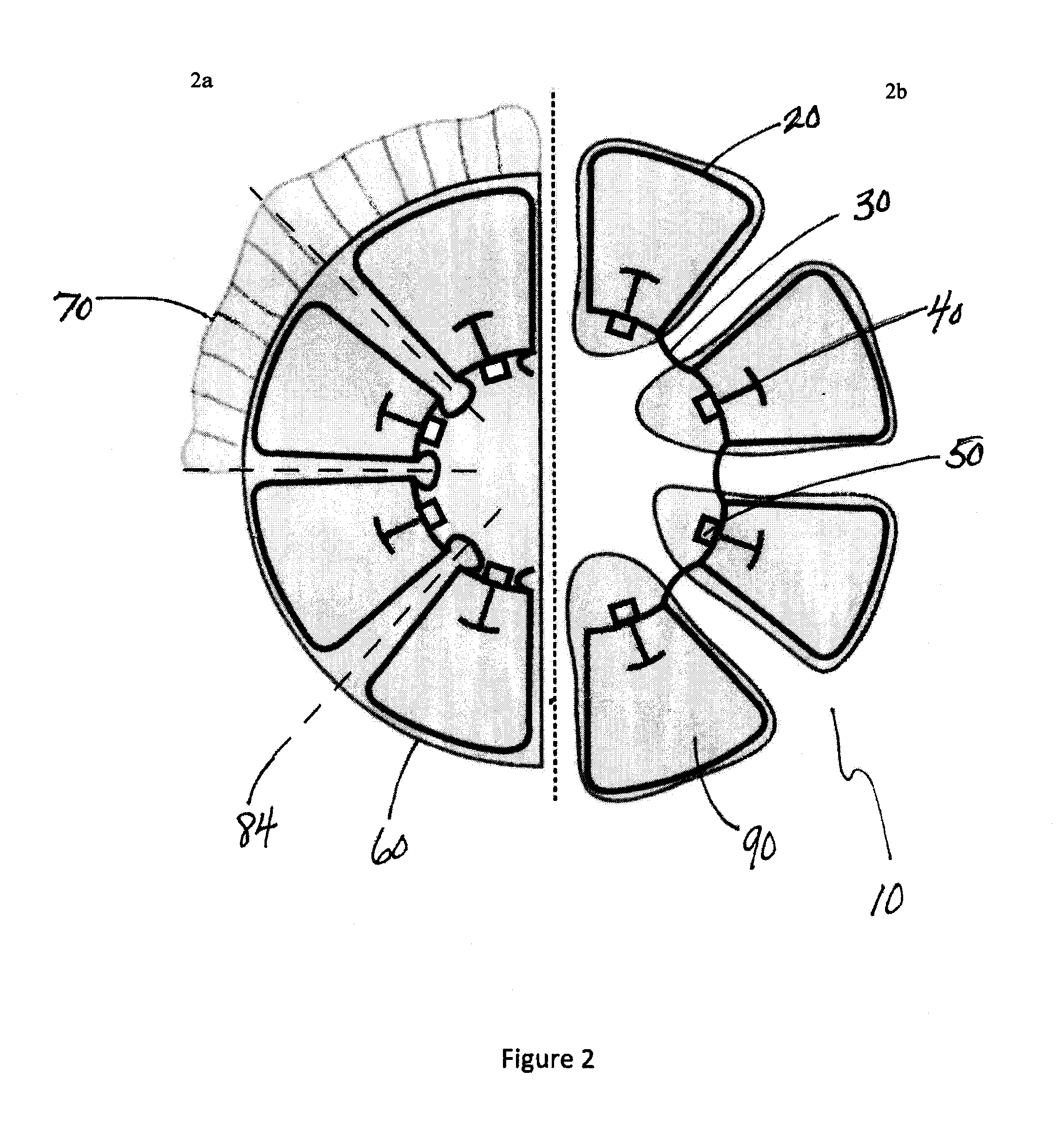Accommodative intraocular lens and method of improving accommodation
a technology of intraocular lens and accommodation, which is applied in the field of intraocular lens system and methods of improving accommodation, can solve the problems of inability to provide sufficient spatial displacement of the lens along the optical axis to provide an adequate amount of accommodation, reduce the amount of axial displacement of the lens that can be achieved, and limit the accommodation in these systems, so as to facilitate the fusion of the capsular bag and improve the accommodation
- Summary
- Abstract
- Description
- Claims
- Application Information
AI Technical Summary
Benefits of technology
Problems solved by technology
Method used
Image
Examples
Embodiment Construction
[0035]All patent applications, patents and other references cited herein are hereby incorporated by reference in their entirety into the present disclosure.
[0036]In ophthalmology, the term “haptic” refers to a support structure that extends out from an optic element of an intraocular lens, for holding the lens in place within the capsular bag of the eye. For purposes of the present invention, “haptics” are sometimes referred to as “zonular capature haptics” and refer to structures or material that not only assist with placement and centration of the lens within the capsule, but are frame-like or fenestrated structures, which permit or facilitate fusion of the anterior and posterior capsules following removal of the natural lens and placement of the artificial lens so that the haptics become securely entrapped within the fused capsule. The haptics define individual “sections” of the capsule which can be separated after fusion has occurred by making radial cuts in the capsule, specifi...
PUM
 Login to View More
Login to View More Abstract
Description
Claims
Application Information
 Login to View More
Login to View More - R&D
- Intellectual Property
- Life Sciences
- Materials
- Tech Scout
- Unparalleled Data Quality
- Higher Quality Content
- 60% Fewer Hallucinations
Browse by: Latest US Patents, China's latest patents, Technical Efficacy Thesaurus, Application Domain, Technology Topic, Popular Technical Reports.
© 2025 PatSnap. All rights reserved.Legal|Privacy policy|Modern Slavery Act Transparency Statement|Sitemap|About US| Contact US: help@patsnap.com



